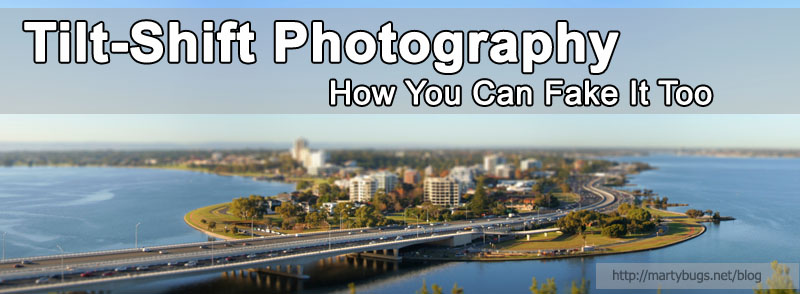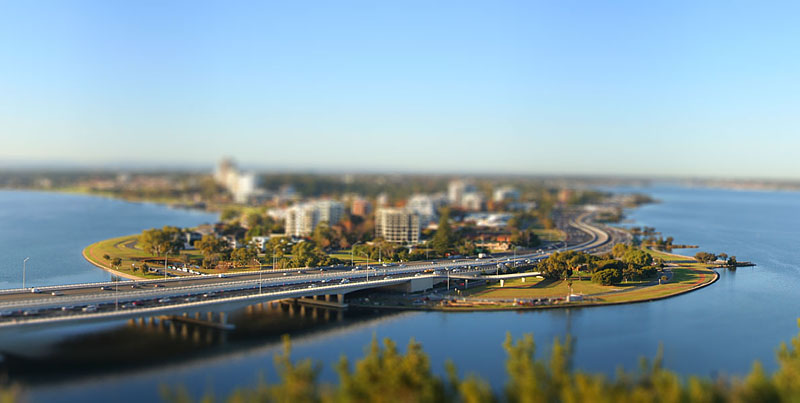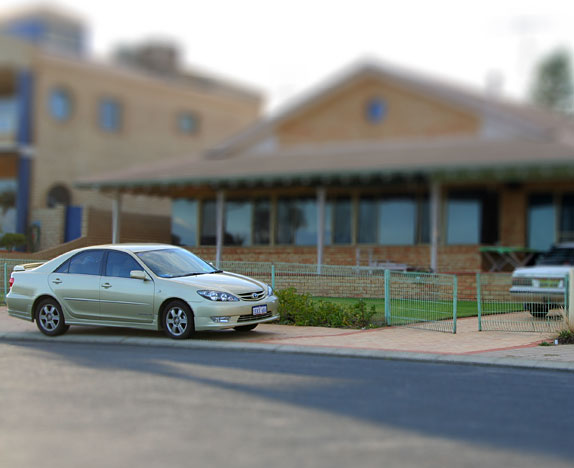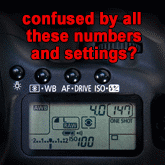
In recent weeks, there seems to be a growing interest in tilt-shift photography, as well as applying a fake tilt-shift effect to photos. This post provides some background information, as well as details on how you can achieve a tilt-shift effect with your own photos.

Strictly speaking, tilt-shift photography involves rotation of the lens relative to the image plane (that's the tilt), and movement of the lens parallel to the image plane (that's the shift). The tilt is used to control the orientation of the plane of focus, and the shift is used to control perspective. Tilt-shift lenses are often used for architecture photography, as the shifting effect allows the effects of perspective to be negated, thus keeping parallel lines parallel.
Tilt-shift lenses can also be used to reduce the depth of field, causing the resulting photo to look like a photo of a miniature scale model.
Rather than buying an expensive tilt-shift lens, a fake tilt-shift effect can also be applied digitally, using Photoshop or another graphics editing application.

There are some great collections of tilt-shift photography on the web, and here are a few of them:
- 50 Amazing Examples of Tilt-Shift Photography
- 41 Amazing Tilt-shift miniature faking photographs
- 19 Breathtaking Examples Of Tilt-Shift Photograph
A quick search on Flickr turns up plenty of groups dedicated to tilt-shift photography, with some groups restricted to "real" tilt-shift photos (ie, where the effect was done in-camera), while others focus on digitally tilt-shifted photos.
There's also a Flickr group called tiltshiftflickrfakemeeeplease, where you can upload photos, and people who know their fake tilt-shiftery will apply tilt-shift your photos for you.
The tilt-shift effect can also be used with video. This can either be done by using a tilt-shift lens on a video camera (or by using a tilt-shift lens on a DSLR that supports video, such as the Canon 5D mark II), or via stop-motion photography, where multiple images are merged together into an animation.
Keith Loutit has some great examples of tilt-shift stop-motion videos on vimeo.com, and I particularly like the one titled Metal Heart, where a demolition derby looks quite different as a tilt-shift (via gizmodo.com)!

The Fake Model Photography tutorial is a good starting point for creating the fake tilt-shift effect in Photoshop, and uses a gradient mask to apply a blur to the photo to give a very narrow depth of focus.
For more realistic looking miniaturised photos, have a look at the tutorial I wrote some time ago, titled Faking Tilt-Shift - a Tutorial for Realistic Miniaturised Photos.
For an even easier method of creating fake tilt-shift photos, there's the Tilt Shift Maker website, which allows anyone to create a tilt-shift very easily via the website. You just need to upload a photo, use the web interface to select the focus plane and focus size, and a resulting fake tilt-shift image is generated for you.
The TiltShiftMaker photos Flickr group has a good range of example fake tilt-shift photos generated with the TiltShiftMaker.
For iPhone users, there's even a tilt-shift application for iPhone, allowing you to create fake tilt-shifts on your iPhone.



I remember gazing over your tutorial previously, but thanks for the (almost) comprehensive resource...any idea on a link to doing this in GIMP?